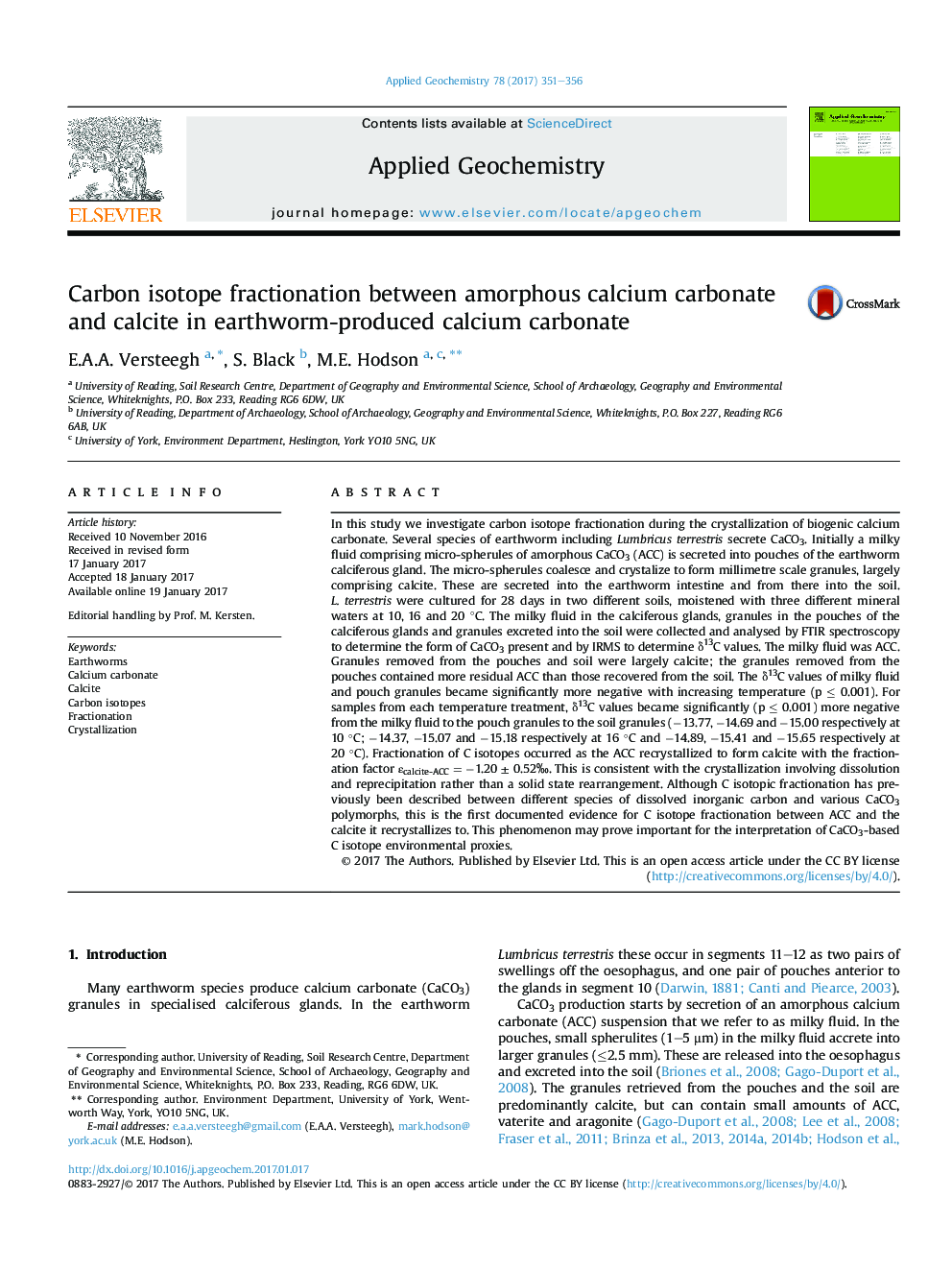| کد مقاله | کد نشریه | سال انتشار | مقاله انگلیسی | نسخه تمام متن |
|---|---|---|---|---|
| 5752696 | 1620213 | 2017 | 6 صفحه PDF | دانلود رایگان |
عنوان انگلیسی مقاله ISI
Carbon isotope fractionation between amorphous calcium carbonate and calcite in earthworm-produced calcium carbonate
ترجمه فارسی عنوان
کسر اکسید کربن بین کربنات کلسیم آمورف و کلسیت در کربنات کلسیم تولید شده توسط کرم خاکی
دانلود مقاله + سفارش ترجمه
دانلود مقاله ISI انگلیسی
رایگان برای ایرانیان
کلمات کلیدی
کرم خاکی، کربنات کلسیم، کلسیت، ایزوتوپهای کربن، تقسیم بندی، بلورسازی،
موضوعات مرتبط
مهندسی و علوم پایه
علوم زمین و سیارات
ژئوشیمی و پترولوژی
چکیده انگلیسی
In this study we investigate carbon isotope fractionation during the crystallization of biogenic calcium carbonate. Several species of earthworm including Lumbricus terrestris secrete CaCO3. Initially a milky fluid comprising micro-spherules of amorphous CaCO3 (ACC) is secreted into pouches of the earthworm calciferous gland. The micro-spherules coalesce and crystalize to form millimetre scale granules, largely comprising calcite. These are secreted into the earthworm intestine and from there into the soil. L. terrestris were cultured for 28 days in two different soils, moistened with three different mineral waters at 10, 16 and 20 °C. The milky fluid in the calciferous glands, granules in the pouches of the calciferous glands and granules excreted into the soil were collected and analysed by FTIR spectroscopy to determine the form of CaCO3 present and by IRMS to determine δ13C values. The milky fluid was ACC. Granules removed from the pouches and soil were largely calcite; the granules removed from the pouches contained more residual ACC than those recovered from the soil. The δ13C values of milky fluid and pouch granules became significantly more negative with increasing temperature (p â¤Â 0.001). For samples from each temperature treatment, δ13C values became significantly (p â¤Â 0.001) more negative from the milky fluid to the pouch granules to the soil granules (â13.77, â14.69 and â15.00 respectively at 10 °C; â14.37, â15.07 and â15.18 respectively at 16 °C and â14.89, â15.41 and â15.65 respectively at 20 °C). Fractionation of C isotopes occurred as the ACC recrystallized to form calcite with the fractionation factor εcalcite-ACC = â1.20 ± 0.52â°. This is consistent with the crystallization involving dissolution and reprecipitation rather than a solid state rearrangement. Although C isotopic fractionation has previously been described between different species of dissolved inorganic carbon and various CaCO3 polymorphs, this is the first documented evidence for C isotope fractionation between ACC and the calcite it recrystallizes to. This phenomenon may prove important for the interpretation of CaCO3-based C isotope environmental proxies.
ناشر
Database: Elsevier - ScienceDirect (ساینس دایرکت)
Journal: Applied Geochemistry - Volume 78, March 2017, Pages 351-356
Journal: Applied Geochemistry - Volume 78, March 2017, Pages 351-356
نویسندگان
E.A.A. Versteegh, S. Black, M.E. Hodson,
